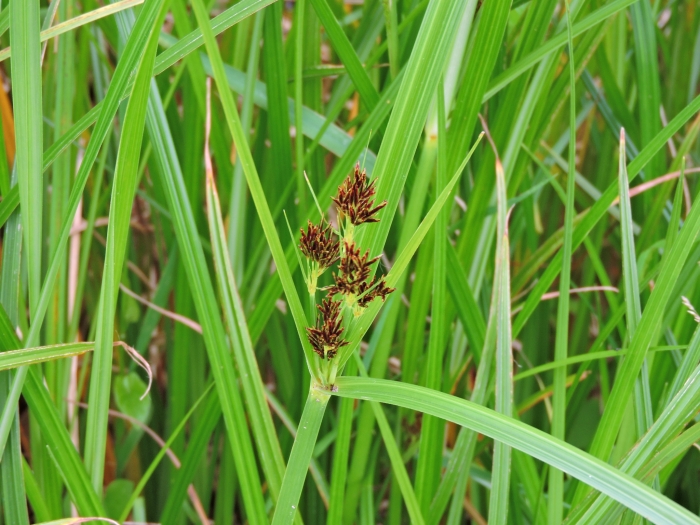Sweet Cyperus
(Cyperus longus)
Sweet Cyperus (Cyperus longus)
/
/

Susan Marley
CC BY 4.0
Image By:
Susan Marley
Recorded By:
Copyright:
CC BY 4.0
Copyright Notice:
Photo by: Susan Marley | License Type: CC BY 4.0 | License URL: http://creativecommons.org/licenses/by/4.0/ | Rights Holder: Susan Marley | Publisher: iNaturalist | Date Created: 2020-06-16T15:13:06-07:00 |
























Estimated Native Range
Summary
Cyperus longus, commonly known as sweet cyperus or galingale, is a perennial sedge that can reach up to 3 feet in height. It is characterized by its creeping rhizomes and erect, triangular stems. Native to wetlands, marshes, and the margins of ponds and rivers, sweet cyperus thrives in moist, nutrient-rich soils. Its native range includes Africa and Eurasia
, . The plant produces clusters of small, greenish-brown flowers in the summer, which are not particularly showy but have a sweet, aromatic scent.
Sweet cyperus is valued for its ability to stabilize soil and filter water in wetland settings. It is often used in water gardens, around ponds, and in naturalized areas where its vigorous growth is desired. For cultivation, it requires consistently moist or wet soil and can grow in full sun to part shade. While it is not typically grown for its ornamental qualities, the plant’s dense foliage can provide a lush, green backdrop in water features. Caution is advised when planting sweet cyperus outside its native range, as it can become invasive and outcompete native vegetation.CC BY-SA 4.0
Sweet cyperus is valued for its ability to stabilize soil and filter water in wetland settings. It is often used in water gardens, around ponds, and in naturalized areas where its vigorous growth is desired. For cultivation, it requires consistently moist or wet soil and can grow in full sun to part shade. While it is not typically grown for its ornamental qualities, the plant’s dense foliage can provide a lush, green backdrop in water features. Caution is advised when planting sweet cyperus outside its native range, as it can become invasive and outcompete native vegetation.CC BY-SA 4.0
Plant Description
- Plant Type: Grass
- Height: 1.5-3 feet
- Width: 2-3 feet
- Growth Rate: Moderate
- Flower Color: N/A
- Flowering Season: Summer, Fall
- Leaf Retention: Evergreen
Growth Requirements
- Sun: Full Sun, Part Shade
- Water: High
- Drainage: Medium, Slow
Common Uses
Erosion Control, Street Planting, Water Garden
Natural Habitat
Wetlands, marshes, and the margins of ponds and rivers
Other Names
Common Names: Long-stalked Yellow-sedge , Sweet Galingale
Scientific Names: Cyperus longus , Chlorocyperus longus , Cyperus fenzelinus , Cyperus loadius , Cyperus longus var. longus , Cyperus longus var. pallescens , Cyperus myriostachys , Cyperus pertenuis , Cyperus tenuiflorus , Eucyperus longus , Pycreus longus
GBIF Accepted Name: